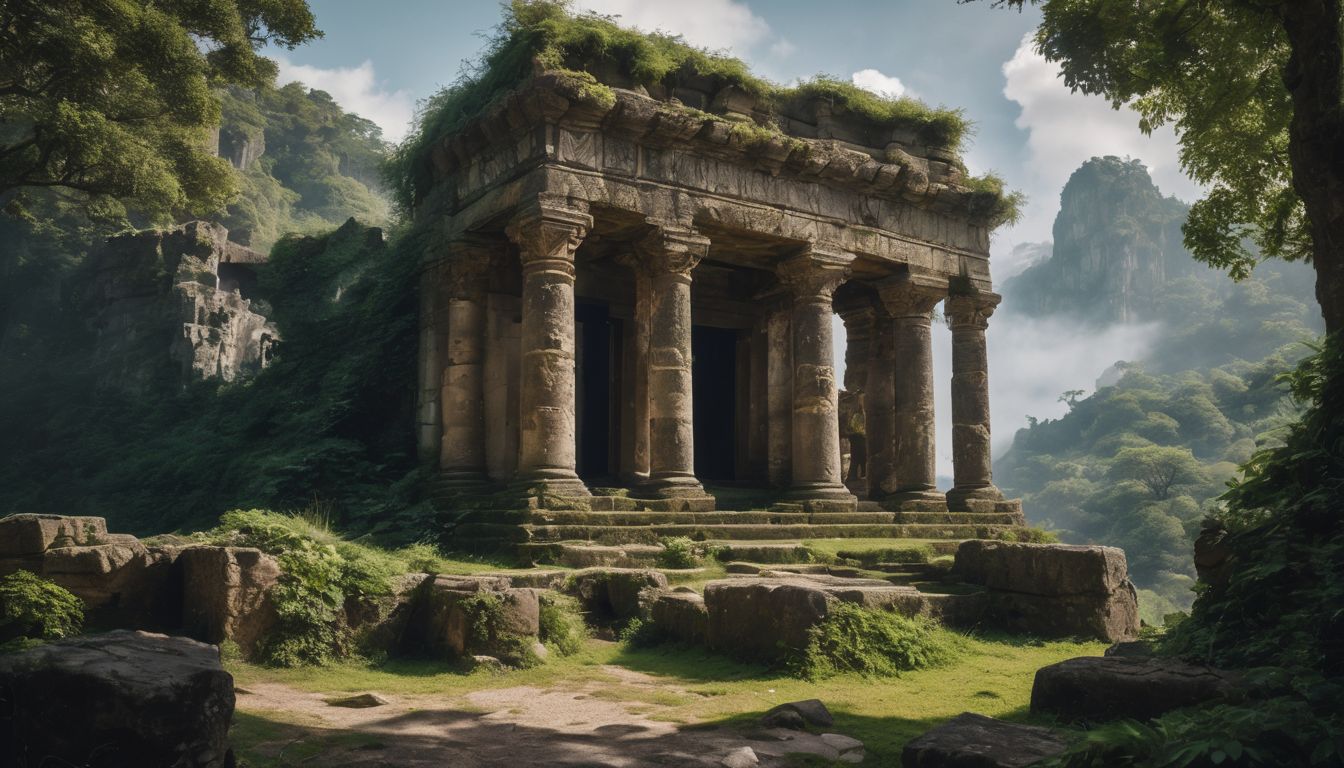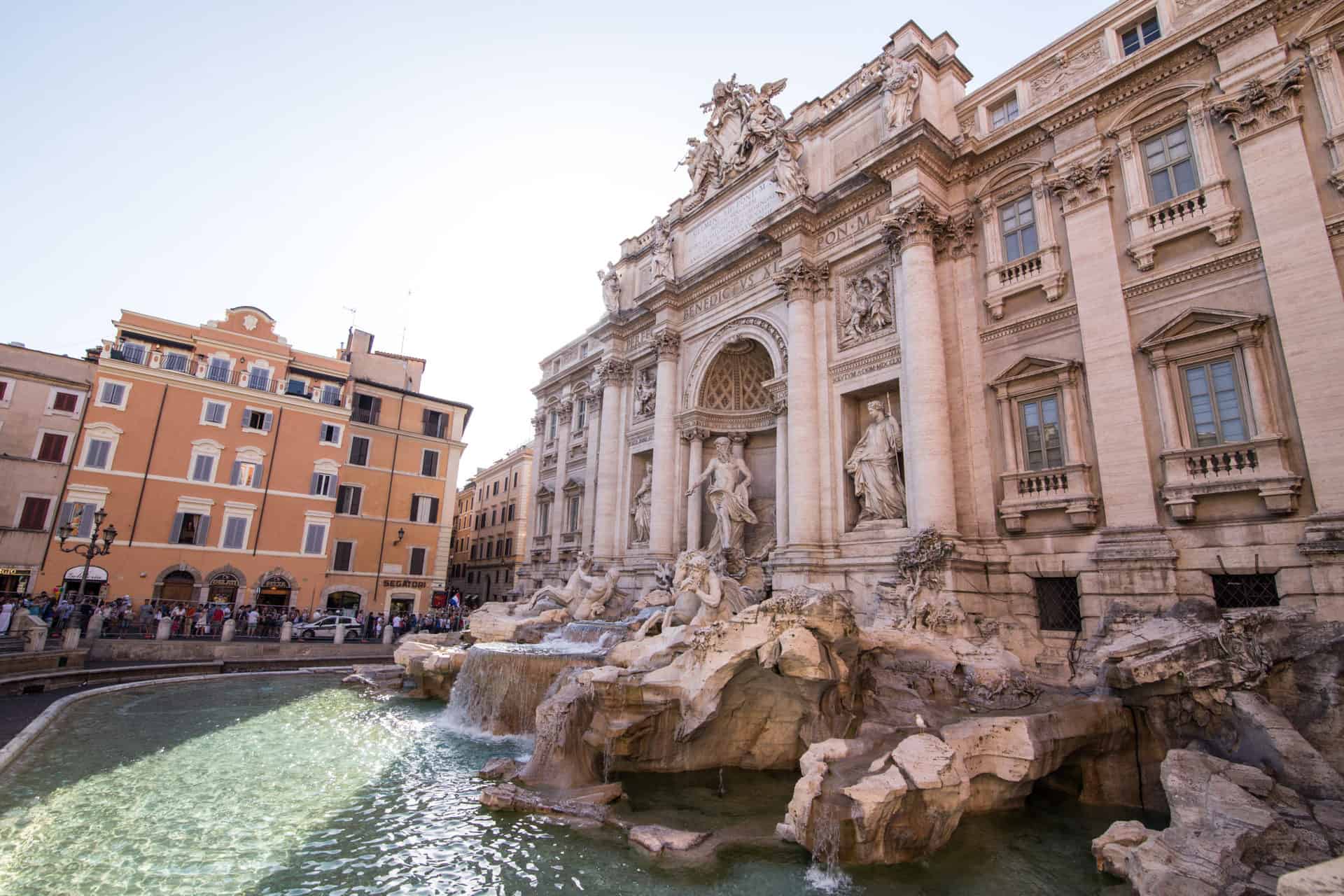Exploring the Magnificent Solstice Stone: Unveiling Mystical Powers

Updated On: May 04, 2024 by Shaimaa Olwan
Imagine having a private audience with a secret so ancient, such as the Solstice Stone, that it predates even the earliest civilisations. The Solstice Stone is an enigmatic artefact brimming with mystical energy and shrouded in fascinating obscurity.
Our journey to decipher its ancient secrets will tether us to human history in ways we’ve only dreamed of, from unravelling the mysteries behind solstice celebrations in primal societies to meandering through mythical landscapes that once were traversed by legendary figures like Merlin.
Fancy embarking on this extraordinary voyage into antiquity? We best get cracking, then!
Ancient Origins of the Solstice Stone

This unique stone has ancient origins, forming from the rapid cooling of ancient lava beds.
Formation from Rapid Cooling of Ancient Lava Beds
The Solstice Stone has a unique start. Long ago, hot lava flowed on the land. Then it cooled down very fast. This made a dark and hard rock called basalt. This unique stone came from this kind of rock. The quick cooling gives it special marks and shapes. These make each stone stand out as one-of-a-kind!
Mysterious Properties and History
The Solstice Stone holds many mysterious properties and has a fascinating history. It is believed to possess magical and healing powers, similar to the stones used in constructing Stonehenge.
The stone’s unique pentagonal shape and luminescence make it stand out from other stones. It has been associated with ancient rituals and spiritual beliefs, adding to its enigmatic connection with places like Stonehenge.
Archaeologists and researchers are still exploring the origins and purpose of this ancient artefact. Its significance goes beyond its historical origins as it may also have connections to mythological figures like Merlin or the biblical figure Jacob.
The Solstice Stone is a captivating piece that intrigues solo travellers, backpackers, luxury travellers, foodies, history buffs, and nature lovers alike. Its mystical properties and rich history make it an intriguing subject for anyone interested in ancient civilisations or curious about the supernatural world around us.
Unveiling the Mystical Powers of the Solstice Stone
The solstice stone possesses unique physical and metaphysical properties, making it a powerful tool for invoking solstice energy and spiritual connection.
Unique Physical and Metaphysical Properties
The Solstice Stone possesses unique physical and metaphysical properties that make it truly remarkable. In terms of its physical attributes, the stone has a pentagonal shape and a beautiful luminescence that sets it apart from other stones.
Its chipped or brushed finish adds to its allure, giving it an ancient and mysterious appearance. On a metaphysical level, the Solstice Stone is believed to have magical and healing powers, similar to the stones used in the construction of Stonehenge.
This connection with mystical energy makes it highly sought after by spiritual seekers looking for solstice energy and a deeper spiritual connection. Whether you’re interested in history, spirituality or simply appreciate the beauty of natural stones, exploring the unique physical and metaphysical properties of the Solstice Stone is sure to captivate your imagination and leave you longing for more.
Physical Characteristics
- Size: The exact dimensions of the Solstice Stone will vary depending on the source you consult. However, most estimates place its height somewhere between 10 and 20 feet (3-6 meters).
- Shape: The Solstice Stone is typically described as a megalith, meaning a large, upright stone. Its specific shape can vary depending on its natural form and any modifications made by its builders. Some accounts describe it as a roughly rectangular pillar, while others suggest a more irregular, tapered form.
- Material: Identifying the material composition of the Solstice Stone is crucial for understanding its origins and how it has weathered the passage of time. The most common descriptions point towards a type of igneous rock, such as granite or basalt. These hard stones are known for their durability and resistance to erosion, making them suitable choices for such a permanent structure.
- Markings: The presence or absence of markings on the Solstice Stone is a point of significant interest. Some accounts mention intricate carvings or symbols etched onto the surface, potentially offering clues about its purpose or the civilisation that erected it. However, other descriptions portray the stone as devoid of any markings, leaving its significance open to interpretation.
Location
Pinpointing the exact location of the Solstice Stone can be challenging due to the potential ambiguity surrounding its name and the limited information available. Here are some key details to consider:
- Geographical Details: Depending on the source, the Solstice Stone might be located in various regions around the world. Some accounts place it in Europe, while others suggest locations in Asia, Africa, or even South America. Without a confirmed location, it’s crucial to consult credible archaeological sources and pay attention to the surrounding geographical details mentioned in descriptions.
- Surrounding Landscape: The landscape surrounding the Solstice Stone can offer valuable clues about its purpose and potential connections to the civilisation that built it. Was it erected on a hilltop overlooking the surrounding plains? Situated near a river or other natural landmark? Understanding the landscape can shed light on potential astronomical alignments, resource availability, or the symbolic significance of the location for the builders.
- Connection to Settlements or Landmarks: The proximity of the Solstice Stone to any known settlements or archaeological sites is a vital piece of information. Were there any villages or dwellings nearby? Does it stand near other megalithic structures or ancient monuments? Identifying any connections to past human activity can help establish a timeline and potentially link the Solstice Stone to a specific culture.
By carefully examining the physical characteristics and location of the Solstice Stone, we can begin to piece together the puzzle of its purpose and significance. The size, shape, material, and presence of markings offer insights into the engineering capabilities and symbolic language of its builders. Similarly, the surrounding landscape and any connections to settlements or landmarks can provide valuable context for understanding its role within the broader cultural landscape. As we delve deeper into these aspects, the Solstice Stone slowly begins to reveal its secrets.
A Journey Through Time: Dating the Solstice Stone

Pinpointing the exact age of the Solstice Stone proves to be a significant hurdle in unravelling its story. Dating megalithic structures presents a unique challenge for archaeologists, demanding a multifaceted approach that combines scientific techniques with a deep understanding of past cultures.
The Challenges of Unveiling the Past
Unlike more recent historical structures built with materials like mortar or bricks, megaliths often lack readily datable elements. Organic materials like wood or bone, commonly used for dating purposes, may be scarce or entirely absent. Additionally, written records from the time period are often nonexistent, leaving archaeologists to rely on indirect methods.
Unearthing Clues: Dating Techniques Employed by Archaeologists
Despite the challenges, archaeologists have developed a sophisticated arsenal of techniques to estimate the age of megaliths:
- Radiocarbon Dating: This widely used technique measures the decay of radioactive carbon-14 in organic materials associated with the monument. While not directly applicable to the stone itself, it can be used to date nearby artefacts, burials, or hearths, providing a timeframe for human activity around the Solstice Stone.
- Archaeoastronomy: This approach analyses the astronomical alignments of the monument. By studying the position of the Solstice Stone in relation to the rising or setting sun during solstices and equinoxes, archaeologists can estimate the time period when these alignments would have held specific significance.
- Typology: This method involves comparing the style and construction techniques of the Solstice Stone to other dated megalithic structures. By identifying similarities in shape, size, or arrangement of stones, archaeologists can make educated guesses about the relative age of the Solstice Stone.
- Geological Techniques: In some cases, geologists can analyse the weathering patterns or erosion marks on the stone to estimate its exposure time to the elements, offering a minimum age for the monument.
Unveiling the Solstice Stone’s Age: The Most Widely Accepted Dating Range
By combining these techniques and meticulously analysing the available data, archaeologists have proposed a dating range for the Solstice Stone. This range can vary depending on the specific location and the weight given to each dating method. However, most estimates place the construction of the Solstice Stone somewhere between the Late Neolithic period (around 6,000 BCE) and the Early Bronze Age (around 3,000 BCE).
Significance of the Dating Range
The established dating range for the Solstice Stone holds immense significance. It allows us to place the monument within a specific historical context. We can begin to explore which cultures thrived in the region during that time period and investigate their known practices and beliefs. This information can provide valuable clues about the potential purpose and meaning of the Solstice Stone for its builders.
While the exact date of construction might remain elusive, the dating process offers a crucial stepping stone in understanding the Solstice Stone’s place within the grand narrative of human history.
Invoking Solstice Energy and Spiritual Connection
When holding the Solstice Stone, you can tap into its powerful energy and feel a deep spiritual connection. This ancient artefact is believed to hold mystical powers that align with the solstice, a special time of year marked by astronomical events.
Ancient civilisations used it in sacred rituals and ceremonies, connecting them to the cycle of nature and the universe. The stone’s unique properties make it a perfect tool for invoking solstice energy and enhancing your spiritual experiences.
Whether you’re a solo traveller, backpacker, luxury traveller, foodie, history buff or nature lover, experiencing this connection can be truly transformative.
Theories on Purpose and Function
The imposing presence of the Solstice Stone has sparked countless theories about its purpose. Was it a sophisticated astronomical tool, a sacred site for rituals, or a symbol of power and authority? Let’s delve into the most prominent theories and the evidence that supports them.
Astronomical Alignment: A Gateway to the Cosmos
One of the most captivating theories suggests the Solstice Stone served as a sophisticated astronomical marker. Proponents of this theory point to the following evidence:
- Orientation: Many megaliths exhibit precise alignments with celestial bodies like the sun and moon. If the Solstice Stone is situated on a hilltop or has specific carvings, it might be oriented towards the sunrise or sunset on solstices or equinoxes.
- Archaeoastronomical Observations: By studying the position of the Solstice Stone and the surrounding landscape, archaeologists can determine if it aligns with specific celestial phenomena. This analysis can reveal whether the monument was built to track the sun’s movement or mark significant astronomical events.
- Comparisons to Similar Structures: Several megaliths around the world, such as Stonehenge in England, are demonstrably aligned with astronomical events. If the Solstice Stone shares similar architectural features or orientation patterns with these known astronomical structures, it strengthens the theory of its celestial purpose.
Religious Significance: A Sacred Site for Rituals
Another theory proposes the Solstice Stone served as a focal point for religious practices. Here’s the supporting evidence:
- Proximity to Burials or Ritual Sites: If the Solstice Stone is located near ancient burial grounds or evidence of ritualistic activity, it suggests a connection to the spiritual realm. Offerings or ceremonial artefacts found near the monument could further support this theory.
- Carvings or Symbols: The Solstice Stone contains carvings or symbolic markings that could represent deities, spiritual concepts, or specific rituals. Deciphering these symbols could provide valuable insight into the builders’ religious beliefs.
- Comparisons to Other Megaliths: Some megaliths have been linked to specific religious practices based on archaeological finds. If the Solstice Stone shares similarities in construction or location with these known religious sites, it strengthens the theory of its sacred purpose.
A Status Symbol: A Monumental Display of Power
A final theory suggests the Solstice Stone functioned as a symbol of power and authority. This theory is supported by the following:
- Sheer Size and Scale: The monumental size and effort required to erect the Solstice Stone could have served as a display of power and engineering prowess by a ruling elite.
- Location: If the Solstice Stone is situated in a prominent location overlooking a large area, it might have been a deliberate choice to showcase the authority and control of the builders.
- Lack of Practical Purpose: If no clear astronomical or religious function can be established, the monument’s sheer scale and location might suggest it served primarily as a symbol of power and dominance.
The Quest for Answers Continues
It’s important to remember that these theories are not mutually exclusive. The Solstice Stone might have served multiple purposes, acting as an astronomical marker, a sacred site, and a symbol of power simultaneously. Ultimately, the true purpose of the Solstice Stone remains shrouded in mystery. However, by examining the available evidence and drawing comparisons to other megaliths, archaeologists continue to piece together the puzzle and paint a clearer picture of the lives and beliefs of the people who erected this enigmatic monument.
Ongoing Research and the Enduring Mystery of the Solstice Stone
The quest to understand the Solstice Stone is a continuous saga. While traditional archaeological methods have yielded valuable insights, recent advancements in technology are opening new doors to unravelling its secrets.
New Tools for Unveiling the Past
- LiDAR (Light Detection and Ranging): This technology uses laser pulses to create detailed 3D models of the landscape surrounding the Solstice Stone. LiDAR can reveal previously unseen features, such as buried structures or pathways, potentially linked to the monument’s purpose.
- Drone Photography: Drones offer a cost-effective way to capture high-resolution images and videos of the Solstice Stone from various angles. This allows for closer examination of the stone’s surface, potentially revealing carvings or markings invisible from the ground.
- Advanced Material Analysis: New techniques in analysing the stone’s composition can offer clues about its origin and the tools used to shape it. This information can help pinpoint the builders’ culture and technological capabilities.
Ongoing Research Projects
- Excavations near the Solstice Stone: Archaeologists are actively searching for settlements, burials, or artifacts in the vicinity of the monument. Unearthing any associated materials can shed light on the daily lives and cultural practices of the builders.
- Multidisciplinary Studies: Teams of archaeologists, astronomers, and anthropologists are collaborating to analyse the Solstice Stone from various perspectives. This combined approach can lead to a more comprehensive understanding of its potential astronomical alignments, religious significance, and social context.
- Comparative Studies: Researchers are comparing the Solstice Stone to other megalithic structures around the world. Identifying similarities in construction techniques, astronomical alignments, or symbolic motifs can provide valuable clues about the shared knowledge and belief systems of these ancient cultures.
Debates and Controversies
While these advancements offer exciting possibilities, the interpretation of the Solstice Stone’s purpose remains a subject of debate. Here are some key controversies:
- Astronomical Significance: Some researchers argue that the Solstice Stone’s alignment is purely coincidental, while others believe it demonstrates a sophisticated understanding of celestial movements.
- Religious Function: Debates exist regarding the specific rituals or deities associated with the Solstice Stone, with limited evidence to conclusively link it to a particular belief system.
- Cultural Attribution: The exact culture that built the Solstice Stone can be difficult to pinpoint, leading to arguments about the diffusion of knowledge or independent development of megalithic traditions across different regions.
A Testament to Human Ingenuity
Despite the ongoing debates, one thing remains certain: the Solstice Stone stands as a testament to the ingenuity and resourcefulness of a bygone era. By continuing to explore the monument through new research methods and fostering collaboration between various disciplines, we inch closer to understanding the purpose it served for its creators. The Solstice Stone may never fully relinquish its secrets, but the journey of discovery holds immense value in enriching our understanding of human history and our enduring connection to the past.
Modern Uses and Craftsmanship
The Solstice Stone has become popular in modern times for its unique properties and craftsmanship. Many people now use the stone for its aesthetic appeal and as a decorative piece in their homes.
Craftsmen have also started incorporating the stone into jewellery, creating beautiful and unique pieces that harness the energy of the solstice. In addition to its visual appeal, some believe that wearing or carrying the Solstice Stone can bring about positive energy, balance, and spiritual connection.
It is also believed to enhance meditation practices and promote a sense of calmness and tranquillity. Whether used as a decorative item or as a tool for spiritual practices, the Solstice Stone continues to captivate individuals from all walks of life with its mystical allure.
Conclusion
In conclusion, the Solstice Stone is an ancient artefact with mysterious powers and rich history. Its unique properties and connection to solstice celebrations make it a fascinating subject of exploration.
As archaeologists continue to uncover its origins, we are one step closer to unravelling the mystical powers of this remarkable stone.
FAQs
1. What is the Solstice Stone?
The Solstice Stone is a rare, dark basalt stone with a chipped finish. Ancient cultures used it as a crafting material for prehistoric monuments.
2. Where can I see the Solstice Stone?
You can find striking pieces of this pure white crystal in places like Rain Spark Gallery in Las Vegas, Scottsdale and various locations across Western Canada.
3. How does the Solstice Stone link to ancient beliefs?
Stone structures crafted from solstice stones show that they play an important role in marking celestial events based on archaeological discoveries pertaining to astronomical alignments.
4. Why are there mystical powers linked with the Solstice Stone?
Our knowledge about astronomical events found at many ancient sites leads us to think these stones were used due to their perceived mystical powers tied to such events according to ancient beliefs.
5. What makes the Solstice Stone unique?
Apart from its origins dating back to archaic times, its unique properties lie in its charm as an ancient crafting material and a possible tool for understanding celestial events.






